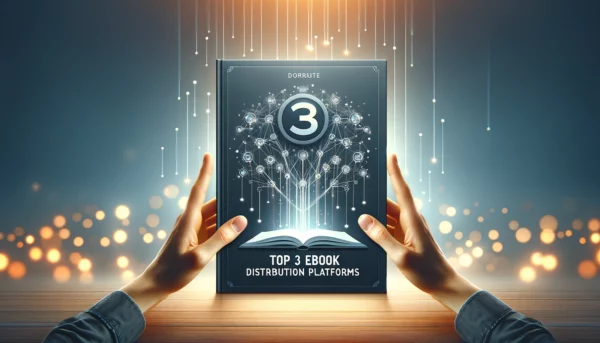In 2024, the publishing industry continues to evolve at a rapid pace, with technological advancements and changing reader preferences significantly impacting how authors bring their works to the public. The once-clear line between traditional and self-publishing routes has blurred, offering authors more options than ever to reach their audiences. Traditional publishing, with its gatekeepers and established distribution channels, still holds the allure of prestige and comprehensive support services. However, the rise of digital platforms and print-on-demand services has democratized the publishing process, enabling authors to retain more control over their work and its profits through self-publishing.
This shift has led to a burgeoning market of self-published authors who leverage online marketing, social media, and direct sales to carve out their niches. As we navigate through 2024, authors are faced with a critical decision: pursue the traditional route with its established infrastructure or embrace the autonomy and potential of self-publishing. Each path offers distinct advantages and challenges, making it essential for authors to carefully consider their goals, resources, and the changing dynamics of the publishing landscape before embarking on their publishing journey. Let’s find out what the cost to publish a book in 2024!
The Publishing Process Explained
Understanding the publishing process is crucial for any aspiring author, with the journey from manuscript to market varying significantly between traditional publishers and self-publishing companies and self-publishing.
Traditional Publishing
This pathway involves submitting your manuscript to publishing houses or literary agents. The initial step is often crafting a compelling query letter or proposal, especially for non-fiction works. If a publisher or agent is interested, they’ll request your full manuscript for review. This process can be lengthy, with no guarantee of acceptance. Once a manuscript is accepted, the publisher assumes responsibility for editing, designing, printing, marketing, and distributing the book. Authors receive royalties from sales, but this comes after the publisher recovers their expenses, which can affect the net earnings an author receives.
Self-Publishing
This route gives authors complete control over the publishing process. It begins with the author ensuring their manuscript is polished, which might involve hiring professional editors and cover designers. The next steps include formatting the book for various platforms (e.g., print, ebook), acquiring an ISBN, and choosing self-publishing platforms or print-on-demand services for distribution. Self-publishing demands a more hands-on approach for marketing, book formatting, and distribution, but it offers higher royalties per book sold since the author fronts the initial costs.
Steps from Manuscript to Market:
- Manuscript Completion: Finishing the initial draft is the first step, regardless of the publishing route.
- Editing and Revisions: Involves multiple rounds of edits, from developmental to copy editing, to polish the manuscript.
- Design and Formatting: This includes cover design and interior layout, crucial for attracting readers and ensuring a professional look.
- Publishing: In traditional publishing, this is handled by the publisher. In self-publishing, the author must choose a platform or service and upload their book.
- Marketing and Distribution: Authors must engage in marketing efforts to promote their book, which can include online promotion, book readings, and more. Distribution channels must be set up to get the book into readers’ hands.
Each path offers its own set of challenges and rewards, with the choice depending on the author’s goals, resources, and level of desired control over the publishing process.
Breakdown of Publishing Costs in 2024
Navigating the financial aspects of publishing a book can be complex, with costs varying based on the services required and the choices an author makes. Here’s a closer look at some of the key expenses involved in the actual cost of publishing a book in 2024.
Editing
Editing is a crucial step in preparing a manuscript for publication, ensuring clarity, coherence, and readability. The various editing services and costs can vary widely depending on the manuscript’s length, the editor’s experience, and the type of editing needed.
- Developmental Editing: This is a high-level review focusing on the structure, content, and overall flow of the book. Prices can range from $0.08 to $0.12 per word, making a 60,000-word manuscript potentially cost between $4,800 and $7,200.
- Line Editing: This detailed edit focuses on the author’s style, language use, and creative content. Costs might range from $0.04 to $0.09 per word, therefore a 60,000-word book could cost between $2,400 and $5,400.
- Copy Editing: This stage addresses grammar, punctuation, and spelling errors, with rates possibly ranging from $0.02 to $0.05 per word, amounting to $1,200 to $3,000 for a 60,000-word manuscript.
Cover Design
The front book cover itself is often the first thing a potential reader notices, making professional design crucial. For a custom book cover designer and the design alone, authors might spend anywhere from $500 to $1,500. Pre-made covers are a more budget-friendly option, typically ranging from $50 to $300 but offer less customization.
Formatting and Typesetting:
Proper formatting is essential for both print format and digital format to ensure a professional appearance and readability.
- For ebooks, formatting might cost between $150 and $300, depending on the book’s complexity.
- Print books require more detailed typesetting, especially if they contain images or special formatting, with costs ranging from $200 to $500.
ISBN and Other Essentials
An International Standard Book Number (ISBN) is a unique identifier for books, necessary for distribution and sales tracking.
- In the United States, a single ISBN costs $125, but packages are available (10 for $295, for example) for authors planning multiple titles.
- Other registrations, such as copyright ($85+ in the U.S.) and the Library of Congress Control Number (free but necessary for U.S. library distribution), also factor into initial costs.
Overall, the costs to publish a book in 2024 can vary widely based on the level of professionalism and the quality of services an author desires. While self-publishing offers more control over the cost, investing in professional services can significantly enhance a book’s marketability and reader appeal.
The Role of Self-Publishing Platforms
In the digital age, self-publishing platforms have revolutionized the way authors bring their works to the public, offering tools and services that streamline the publishing process. These platforms vary in terms of cost, distribution reach, and the level of control they offer authors over their work.
Popular Self-Publishing Platforms
- Amazon Kindle Direct Publishing (KDP): As one of the most popular choices, KDP allows authors to publish both eBooks and paperback books. The platform is free to use, making money by taking a percentage of sales. KDP offers a 70% royalty option for eBooks priced between $2.99 and $9.99 in certain markets, and a 60% royalty for paperbacks, minus printing costs.
- Barnes & Noble Press: This platform enables authors to publish eBooks and print books with no upfront costs. Royalties are competitive, offering 65% on eBooks priced at $2.99 or above and 55% for those priced below $2.99. Print books earn a 55% royalty, minus the cost of printing.
- Apple Books for Authors: Known for its extensive reach in the eBook market, Apple Books allows authors to publish at no cost. The platform provides a 70% royalty rate for books at any price point, without exclusivity requirements.
- Smashwords: This platform offers extensive distribution for eBooks, including to major retailers and libraries. It’s free to publish, with Smashwords taking a small percentage of sales. Authors typically receive 60% of the list price from major retailers and up to 80% from sales made directly on Smashwords.
Comparative Analysis
When comparing these platforms, authors should consider not only the financial aspects but also factors like ease of use, distribution network, and any exclusive rights they might have to grant. For instance, KDP offers a Select program with additional promotional opportunities in exchange for eBook exclusivity, which may not suit authors wanting to cast a wide net across multiple platforms. The choice of platform can significantly affect an author’s visibility and revenue, making it crucial to weigh the benefits and limitations of each option.
Self-publishing platforms empower authors with the tools to distribute, and market their books, democratizing the publishing industry. However, the best platform for an author depends on their specific goals, target audience, and how they plan to promote their book.
Marketing and Distribution Costs
Effective marketing and distribution are critical for the success of any published book. For authors, especially those who choose to self-publish, understanding and planning for these costs is essential to ensure their book reaches its target audience.
Marketing Strategies for Authors
Authors have a plethora of marketing strategies at their disposal, ranging from social media campaigns and email marketing to author websites and book launch events. The choice of strategy should align with where the target audience is most accessible and engaged. Building a strong online presence through platforms like Instagram, Facebook, and Twitter can be a cost-effective way to connect with readers. Additionally, engaging with readers through a professional website and email newsletters can help in building a loyal reader base.
Digital Advertising Costs
Digital advertising through platforms like Google Ads, Facebook, and Amazon can significantly enhance a book’s visibility. The costs of paid advertising can vary widely based on the campaign’s scale, duration, and targeting parameters. For a modest paid advertising campaign, authors might budget from $500 to $2,000, which could cover keyword-targeted ads and social media promotions designed to drive book sales and website traffic.
Professional Website
A professional author website acts as the central hub for an author’s online presence, offering information about the book, the author, and upcoming events. The cost can range from a few hundred dollars for a basic setup using platforms like WordPress or Squarespace to several thousand dollars for a professional editor and a custom-designed website with advanced features.
Distribution Costs
Distribution services are pivotal for getting books into the hands of readers. For self-published authors, distribution through platforms like Amazon’s KDP, IngramSpark, or Draft2Digital involves no upfront costs but they do take a percentage of sales. For wider distribution, including to bookstores and libraries, services like IngramSpark charge a setup fee (around $49 per title) and a percentage of sales in exchange for broader distribution channels.
Planning for marketing and distribution costs is crucial for setting a book up for success. Authors should allocate a portion of their budget to these activities, keeping in mind that effective marketing can significantly impact book sales and overall visibility in a crowded market.
Print on Demand Services: A Cost-Effective Solution
Print on Demand (POD) services have emerged as a game-changer for authors and small publishers, offering a flexible and cost-effective solution for printing books. Unlike traditional bulk printing, which requires a significant upfront investment for a large inventory, POD allows books to be printed individually as orders come in. This model drastically reduces the financial risk for authors, eliminating the need for large storage spaces and upfront capital for inventory.
How POD Works
POD technology integrates with online sales channels, where a book is listed for sale without being physically printed beforehand. When a customer places an order, the POD service prints the book and ships it directly to the customer. This streamlined process reduces waste and ensures that every book printed already has a buyer, making it an environmentally friendly option as well.
Cost Comparison
- Traditional Bulk Printing: This method typically involves lower per-unit costs due to economies of scale, meaning the more copies you print, the cheaper each book becomes. However, it requires a significant initial investment, and if the books don’t sell, the author is left with unsold stock. For instance, printing 1,000 copies of a book might cost $5,000 ($5 per book), but the risk of unsold inventory is high.
- Print on Demand: While the per-unit cost with POD is usually higher, there are virtually no upfront costs, and authors only pay for what sells. For example, a single book might cost $7 to print on demand, but the author only pays when a customer buys the book, ensuring there’s never any excess inventory.
For authors and small publishers looking to minimize financial risk and manage inventory efficiently, POD offers an attractive solution. It enables a lean publishing model, where the focus can remain on writing and marketing, rather than on managing physical stock. The slightly higher cost per unit with POD is often a worthwhile trade-off for the flexibility and reduced risk it offers.
Publishing with Artificial Intelligence
The advent of Artificial Intelligence (AI) in the publishing sector is transforming traditional practices as well as industry standards and offering cost-effective and innovative solutions for authors. AI technologies streamline various stages of the publishing process, from content creation and editing, to design and marketing, reducing overall costs.
AI can automate time-consuming tasks such as formatting, data analysis for market trends, and even aspects of content editing, thereby speeding up the publishing cycle and cutting down labor costs. For instance, AI-driven tools can suggest improvements in grammar, style, and coherence, complementing human editors by taking care of more straightforward, rule-based corrections.
Spines
An example of a company at the forefront of AI-driven publishing is Spines, formerly known as BooxAI. In the rapidly evolving landscape of self-publishing, Spines emerges as a standout platform for its exceptional affordability, Spines stands out as a beacon for authors seeking a fast, affordable, and comprehensive publishing solution, making it an increasingly popular choice for those looking to self-publish, especially in a landscape where speed and cost-efficiency are paramount.
Redefining the publishing process, Spines leverages artificial intelligence to streamline production, significantly reducing costs associated with traditional publishing routes. This AI-driven efficiency enables Spines to offer comprehensive publishing plans at prices well below industry standards, making it an unparalleled option for cost-conscious writers.
Affordability is at the cornerstone of Spines. The platform’s comprehensive plans are designed to be significantly more budget-friendly than traditional publishing avenues. This cost efficiency is largely due to the AI-driven processes that reduce production costs, making Spines an ideal option for poets and authors who seek professional publishing services without the hefty price tag.
Spines is revolutionizing the self-publishing landscape by offering a rapid transformation from manuscript to published book in under 30 days, a feat made possible by its AI-driven, streamlined publishing process. This acceleration aligns with the self-publishing goal of quickly bringing works to readers, ensuring timely relevance and sustained momentum for authors. Additionally, Spines enhances the publishing experience with dedicated support from a personal production manager, guiding authors confidently through every step, from editing to design.
The platform’s versatility shines through its AI-generated options for various formats, including Print-on-Demand, eBooks, and Audiobooks, catering to diverse reader preferences and expanding the work’s reach. Moreover, Spines’ commitment to making authors’ works globally accessible is evident in its extensive distribution network. With the platform, authors can see their work distributed across over 100 channels worldwide, including major retailers like Amazon and Barnes & Noble, significantly boosting their international presence and potential for recognition.
For authors seeking the cheapest option to publish their book, Spines is the best option. Authors can sign up for free to start exploring what the platform offers.
Additional Costs to Consider
Beyond the primary expenses and associated costs with publishing and marketing a book, authors should be aware of several additional costs that can contribute to their book’s success and their personal brand.
Professional Website Development
A professional website is crucial for author branding, serving as a platform to share detailed information about the book, upcoming projects, and events. Depending on the complexity and design, a professionally developed website can cost anywhere from $1,000 to $5,000. This investment ensures a tailored, professional online presence that can attract and retain readers’ interest.
Advanced Marketing Efforts
Engaging in advanced marketing efforts can significantly boost a book’s visibility. Organizing online courses, book tours, and launch events introduces the book to potential readers and creates buzz. The costs for these activities can vary:
- Online Courses: Developing and hosting an online course related to the book’s content might cost $500 to $3,000, depending on the platform and production quality.
- Book Tours and Launch Events: Organizing events can range from a few hundred to several thousand dollars, factoring in venue costs, travel expenses, and promotional materials.
Audiobook Production
With the rising popularity of audiobooks, investing in audiobook production can tap into a wider audience. Production costs depend on the length of the book and the rate of the narrator or production service, costs range from $1,500 to $6,000 for a professionally produced audiobook.
While these additional costs can increase the overall investment in a book’s publication and marketing, they can also significantly enhance the author’s brand, extend the book’s reach, and contribute to long-term success in a competitive market. Authors should carefully consider these options based on their budget, audience, and marketing strategy.
Conclusion: Navigating the Cost to Publish
Embarking on the publishing journey in 2024 requires a nuanced understanding of the costs and processes involved. From editing and cover design to marketing and distribution, each step carries its unique expenses. The advent of AI, exemplified by companies like Spines, presents innovative, cost-effective solutions, transforming traditional publishing practices. As you plan and budget for your book, consider the diverse publishing paths available, including self-publishing platforms and print-on-demand services. Embrace the opportunities offered by technological advancements to optimize your resources and ensure your book reaches its full potential in the evolving literary market.







